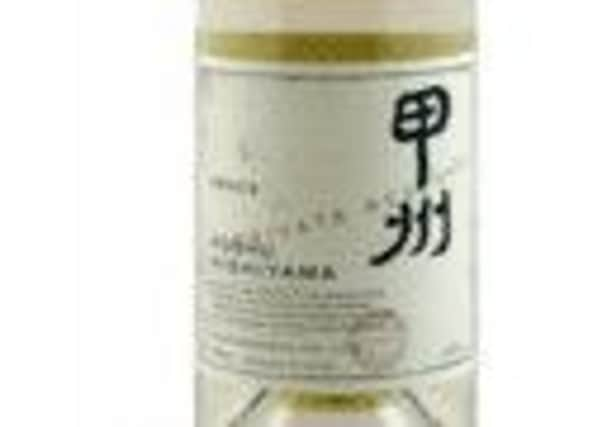Wine: Japanese wines hit British supermarkets


Initially the vineyards were centred on the warmer area of the Kofu basin in Yamanashi, central Honshu, but they are now in the prefectures of Osaka, Shimane, Yamagata and Tottori. Japan today has no less than 250 producers, with a recent rise of smaller boutique wineries, such as Grace winery. Quality has significantly improved thanks to overcoming the viticultural challenges that a climate of high humidity, summer rains, typhoons and exceedingly fertile acid soils can bring. Well-drained volcanic slopes are highly prized, hence the high price of land and resulting high wine prices.
While the Japanese do try to grow chardonnay, cabernet sauvignon and merlot, it is the delicate pink-skinned koshu grape that everyone is talking about. This is Japan’s premium native vitis vinifera grape, yet there seem to be wildly conflicting ideas as to koshu’s actual origin.
Advertisement
Hide AdAdvertisement
Hide AdSome claim it is a descendant of a wild vine, first discovered in Katsunuma in Yamanashi, in 1186. According to Swiss grape geneticist Jose Vouillamoz, koshu belongs to the European vitis vinifera family so it is more likely to have been introduced from Europe or cross bred with two vinifera parent vines – but Vouillamoz’s DNA analysis has not yet found a match with any known variety.
Whatever its origins, koshu is the main Japanese grape to remember. It has 175 hectares of vineyards, 90 per cent of which is in Yamanashi – but it is basically a table grape so the wines made from koshu do not really resemble the wines we are accustomed to from sauvignon blanc and chardonnay. However, it is the best of all grapes you are likely to encounter in Japan.
Marks & Spencer’s new Japanese listing is made from the white koshu grape grown on volcanic soil – and I found it rather intriguing. It is one of the most delicate subtle wines I have tasted, with a light alcohol level under 12 per cent and dry finish with just 2.2g/l residual sugar. It’s made in a reductive way with cool fermentation temperatures and minimum air contact. A lightweight it might be, with a short length of flavour, but its delicacy is perfect for matching sushi and other light oriental fish and rice dishes.
This light style of wine is now much prized in Japan. In the past many Japanese wines were sweet, made from high yielding grapes grown on pergolas – and certainly not to a westerner’s taste.
OUR RECOMMENDATIONS
SOL LUCET KOSHU 2013
(£12.99, Marks & Spencer)
• Alcohol 11.5 per cent
• Grape Koshu
• Winery Kurambon winery
• Origin Yamanashi
• Very attractive label, light floral nose, hint of citric fruits, very crisp, lively acidity with lemongrass undertones, very light, delicate finish. Would suit those who prefer Muscadet to Montrachet.
STAR BUY
HISHIJAMI PRIVATE RESERVE KOSHU 2012
(£16.96, www.thedrinkshop.com)
Alcohol 12 per cent
Grape Koshu
Winery Grace winery
Origin Yamanashi
Subtle appley aromas, initial burst of citric fruits, but finishes very short; too expensive.
Join Rose’s Tasmania Masterclass on 24 September in Edinburgh, £40, www.rosemurraybrown.com